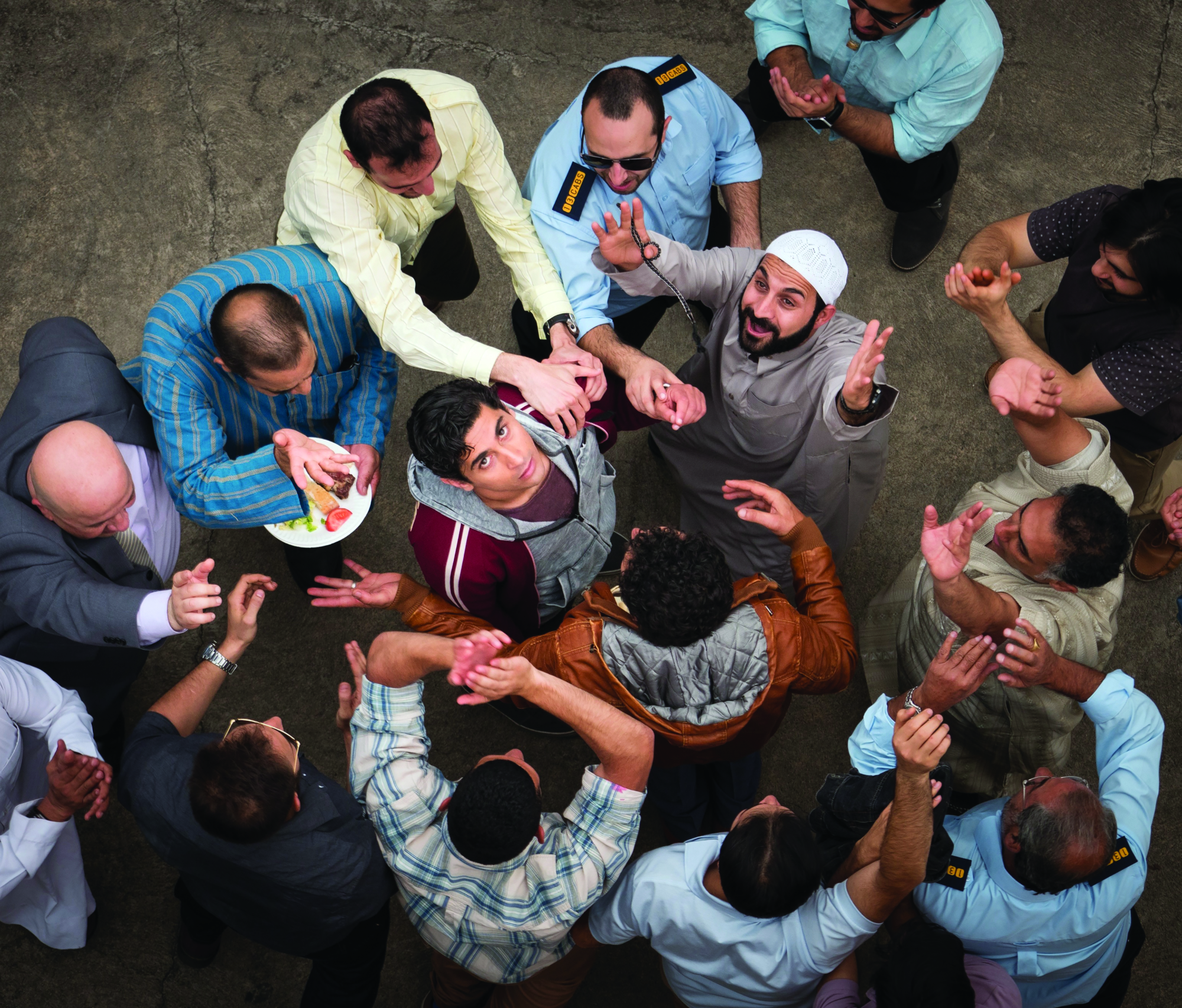We in the Lebanese community are particularly fixated on seeing ourselves in the spotlight. While we will settle for any representation at all, our chests puff up with pride when someone who is famous and well loved shares our ethnic background. Talk to nearly any Lebanese person about famous people from our community and they’ll start animatedly reciting a list of celebrities: Shakira, Salma Hayek, Carlos Slim, Amal Clooney, Ralph Nader, Wentworth Miller, Tony Shalhoub, Vince Vaughn, Zoe Saldana. The fact that, for many years, we’ve also laid claim to Keanu Reeves, even though his only tie to Lebanon is that he was born in Beirut, tells you everything you need to know about our desire for representation.
There’s something powerful about seeing people who look like you on the silver screen. When you’re used to not having your life reflected back at you, or not hearing the stories of your community among wider society, you start to think that maybe these stories – and people like you – don’t matter.
For years, growing up as an Australian-born Lebanese woman, I held on to films like My Big Fat Greek Wedding (Joel Zwick, 2002) and Looking for Alibrandi (Kate Woods, 2000) – films about Greek and Italian families, respectively – as I found something relatable in their stories about the immigrant experience. I, too, am from a migrant background; my family immigrated to Australia around the same time as many of the Italians and Greeks. It felt like we had enough in common that our experiences would meld together, as though nuance and specificity didn’t matter. In my youth, I saw us all as groups desperately trying to fit into this country we’d called home.
It’s clear now that a few popular films were never going to be enough – and, in 2017, it feels as though we’re even more bereft of well-made films that reflect the true diversity of modern Australia. I go through a checklist of faults whenever I encounter a new film with multicultural depictions. Does the film shy away from going ‘full ethnic’, instead dipping its toes into the territory and then quickly commando-rolling out of it? Does it only explore the lives of minority Australians who fit in really well to the dominant Australian culture? Does it rely on stereotypes and clichés to carry the plot forward? Does it invoke aspects of Australian cultural cringe, thereby putting local audiences off? Ultimately, most titles tick one or more of these boxes and end up feeling like the same disappointing film, with barely differing hues and shades.
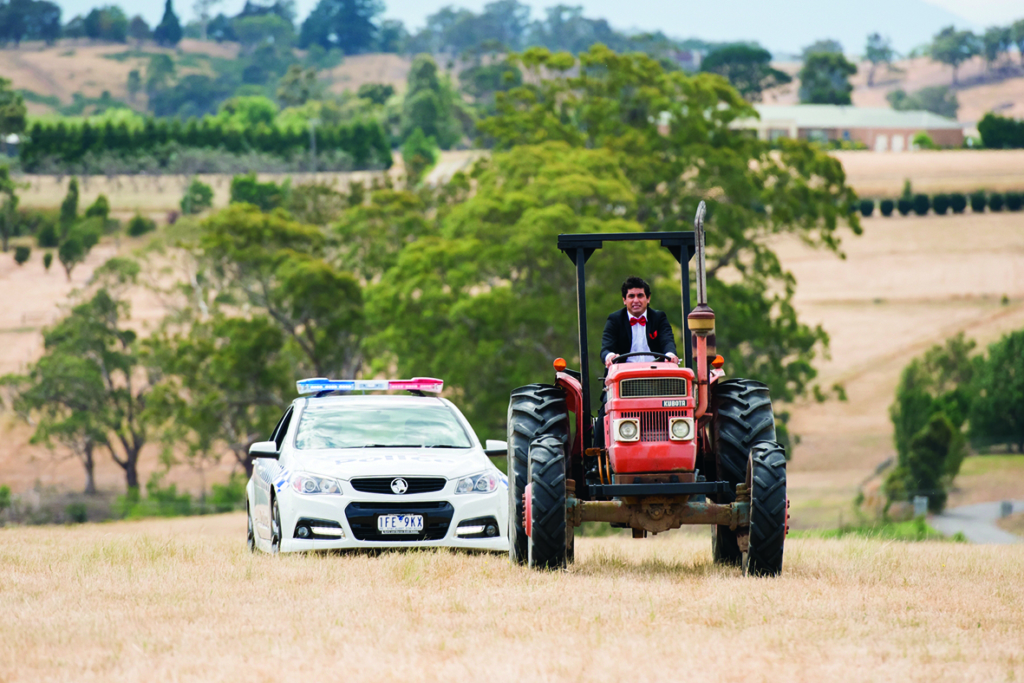
Life story: Ali’s Wedding
Every now and again, however, a film comes along that stops you in your tracks and reminds you that there’s a better, more realistic, more authentic path for representation. Ali’s Wedding (Jeffrey Walker, 2017), co-written by lead actor Osamah Sami (whose experiences the film is based on), is one such example. The film centres on Ali (Sami), the son of Muslim cleric Mahdi (Don Hany), who – after telling what he believed was an innocuous lie – becomes trapped between his duty to his community and following his heart. Although this sounds like a fairly straightforward story, the film manages to take many wild turns and subverts audience expectations by presenting events in a refreshingly different light. It is irreverent, funny and full of heart.
Ali’s Wedding works primarily because it does not obsess over who its audience is; it is an unabashed portrayal of a particular Muslim-Australian story, and homes in on the unique experiences of an Iraqi refugee trying to live an ordinary life.
The project came into being eight years ago. On the set of telemovie Saved, in which he was co-starring, Sami told director Tony Ayres his life story; awestruck by what he’d just heard, Ayres then set about getting Sami in touch with writer Andrew Knight. Initially reluctant to take on the responsibility of working with a first-time writer who also happens to be the son of a prominent member of Melbourne’s Shiite community, Knight was eventually convinced to come on board:
His story is so extraordinary […] and Osamah has a beautiful understanding of that world, and the complexity and nuance of it, and I thought, really all we have to do is get this into a structural form.[1]Andrew Knight, quoted in Matchbox Pictures, Ali’s Wedding press kit, 2016, p. 6.
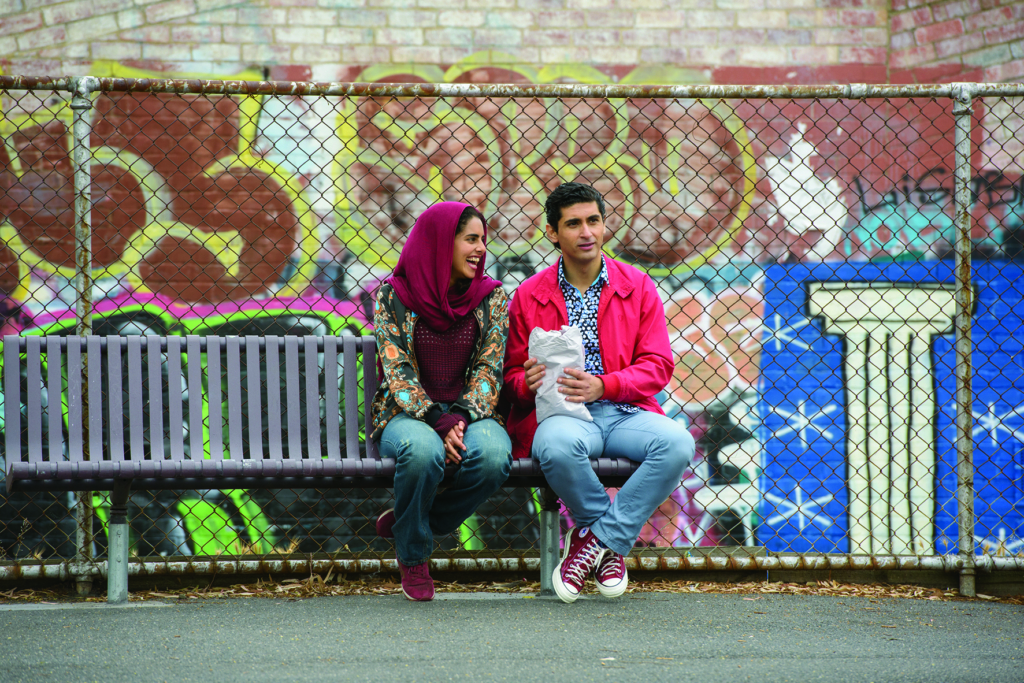
It’s telling that Ayres and Knight – veterans of the Australian screen industries – immediately recognised the power of Sami’s story, and how having firsthand perspectives into a world and a community can make all the difference in how a narrative unfolds on screen. Ali’s Wedding works primarily because it does not obsess over who its audience is; it is an unabashed portrayal of a particular Muslim-Australian story, and homes in on the unique experiences of an Iraqi refugee trying to live an ordinary life. I suspect that, if it had focused more of its energies on catering for a broad viewership, it would have held back on some of its most groundbreaking elements.
I did enjoy Alex & Eve – primarily because its relatable, sanitised depictions offered a break from the reality of being different in Australia. But the film is premised on an idealised conception of how minorities exist in a multicultural Australia, rather than how we actually exist.
The makers of Ali’s Wedding invoke concrete, relatable aspects of Iraqi-Australian life but don’t dwell inordinately on certain elements over others. The film seamlessly shows us how, for example, younger siblings tend to be more ‘integrated’ into mainstream Australian society – whether through language or attitudes – without forcing this distinction in our faces nor employing stereotypical tropes to get this message across. More significantly, the film wholeheartedly portrays the religious side of growing up in the Shiite community. Mainstream film and television exhibit an avoidance of religion or prayer when portraying Islam, often opting for sanitised – and simplistic – depictions that pander to Western tastes; it’s either a passing joke about terrorism or a secular Muslim skirting around the Islam issue in case the nice tolerant character gets uncomfortable. In Ali’s Wedding, however, we see characters praying, attending mosques, seeking clerical counsel and debating different interpretations of Qur’anic passages – all from the point of view of an insider.
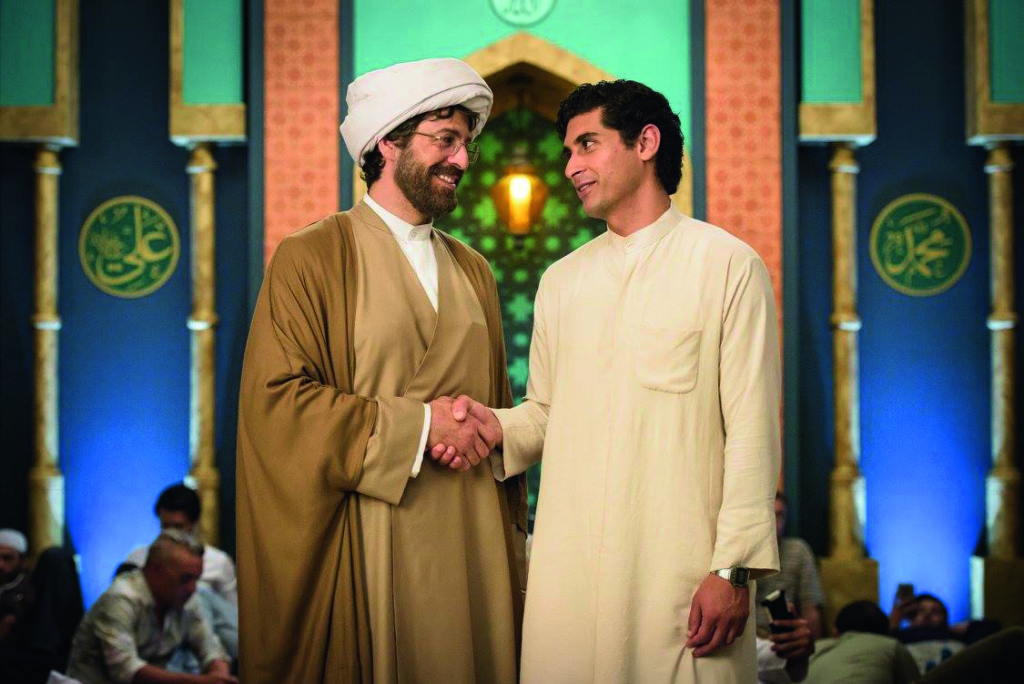
It’s astounding how easily you can settle into this world. After a while, the film’s cultural depictions even become unremarkable – in managing to transcend exoticising portrayals and stereotypes, it becomes just another film about a family and their community. Islam is woven into the fabric of Ali’s Wedding – quite literally at one point, as Mahdi rolls up a white amamah (turban) in the background of a scene. Here, tradition melds into the everyday, and the film doesn’t present it as ‘unusual’. This elevates Ali’s Wedding because it pushes against mainstream media’s penchant for ‘fusion’ depictions of Arab-Australians, as seen in Fat Pizza (Paul Fenech, 2003) and the Nine Network’s Here Come the Habibs, in which the most ridiculous – rather than the most realistic – elements of the culture are put on display. Ali’s Wedding rings true because its meticulous depictions remain faithful to the story’s origins and context. It invites us into mosques and Muslim homes, and bears witness to what they’re like without fear of offending those who walk into the cinema with preconceived notions. It challenges in the way that good storytelling is meant to.
Dramatic limits: Alex & Eve
Ali’s Wedding may be Australia’s first Muslim rom-com but, as Junkee’s Matilda Dixon-Smith points out, it does follow in the footsteps of another recent ‘Australian comedy centred on romance and race’,[2]Matilda Dixon-Smith, ‘Australia Finally Has Its First Muslim Romantic Comedy’, Junkee, 2 November 2016, <http://junkee.com/australian-writer-osamah-sami-bringing-us-first-muslim-rom-com-alis-wedding/88668>, accessed 15 August 2017. Alex & Eve (Peter Andrikidis, 2015). Based on screenwriter Alex Lykos’ play of the same name, the film dramatises the complicated romance between an Orthodox Christian Greek-Australian man and a Muslim Lebanese-Australian woman.

What distinguishes Alex & Eve from Ali’s Wedding is the fact that it’s wholly aware of who its audience is, placing it into a niche so specific it’s hard to climb out of. Andrikidis’ film may boast authenticity because it was created by members of multicultural communities, but, ultimately, it is a cinematic encapsulation of what Anglo-Australians have always assumed ethnic-minority life to be like: strict families; racial and religious divisions; cultures too different and too difficult to assimilate. While Ali’s Wedding invokes these themes as well, Alex & Eve differs because it hints at the idea of other cultural worlds but never goes all in.
Though stories such as those told by Lykos and Andrikidis are necessary in our multicultural society, watching Alex & Eve does, at times, feel like being audience to a dramatised play rather than a document of everyday people living their lives. The film’s framing of its two central cultures is largely one-dimensional, lacking depth and attention to detail. The character of Alex (Richard Brancatisano) is predictably built up as a man in his thirties who has a reliable career (as a teacher) but is struggling to please his Greek parents. Similarly, lawyer Eve (Andrea Demetriades) is presented as a ‘good Muslim girl’, albeit with a rebellious streak. Some lines delivered by the parents – particularly the mix-up when Eve’s mother, Salwa (Helen Chebatte), says, ‘Kifak?’ and Alex’s father, Stavros (Tony Nikolakopoulos), responds with, ‘You get fucked!’ – are believable and hilarious. But, mostly, the film’s depictions of intercultural difficulties, however humorous, feel overdone.

That said, I did enjoy Alex & Eve – primarily because its relatable, sanitised depictions offered a break from the reality of being different in Australia. But the film is premised on an idealised conception of how minorities exist in a multicultural Australia, rather than how we actually exist. It’s the same aspirational lens that lets me watch Looking for Alibrandi and consider it a film that reflects my life – a narrative about an Italian Catholic private-school girl becomes indistinguishable from the reality of a Lebanese Catholic private-school girl. It’s also why I sometimes found Alex & Eve’s Greek family more relatable than the Lebanese one, the former more closely resembling the dominant culture frequently represented on screen. Indeed, while Alex & Eve ostensibly tells the story of two cultures clashing in an Australian context, its depictions of Islam are limited. While it may feature an arranged marriage, women wearing hijabs and references to the faith, we never really see how religion permeates the lives of the Muslim characters. Its function in the film doesn’t extend beyond being a plot device.
Fusion fiction: UnIndian
UnIndian (Anupam Sharma, 2015) similarly attempts to capture the experiences of first-generation migrants, especially in terms of fitting into the Australian way of life. Like the other two films, it contains references to arranged marriages; however, instead of being a trope used only to further the plot, it is presented here as a natural part of the portrayed minority culture. UnIndian is a sweet and funny film about the relationship that blossoms between Indian single mum Meera (Tannishtha Chatterjee) and Aussie-slang teacher Will (former Australian cricketer Brett Lee). I expected to dislike this film after watching the trailer, which teases us with cringeworthy attempts at Australian humour (larrikinism, scratching genitals, a character dropping a towel and appearing nude in front of a conservative Indian family). Those cherry-picked moments align with the type of comedy that has come to characterise Australian cinema and television, and similarly informed my reservations about Here Come the Habibs, whose trailer was an equally strange amalgam of wacky and ridiculous. But the film is a true Sydney story, and a strong attempt at bridging the cultures of Australia and India. Lee is surprisingly watchable, and Chatterjee’s performance really holds up the film, the actress punching well above what the script allowed for her character. Arka Das also pulls off playing Will’s Indian best friend TK, convincingly portraying the casual frustration that comes from having to explain ‘foreign’ things to white people.
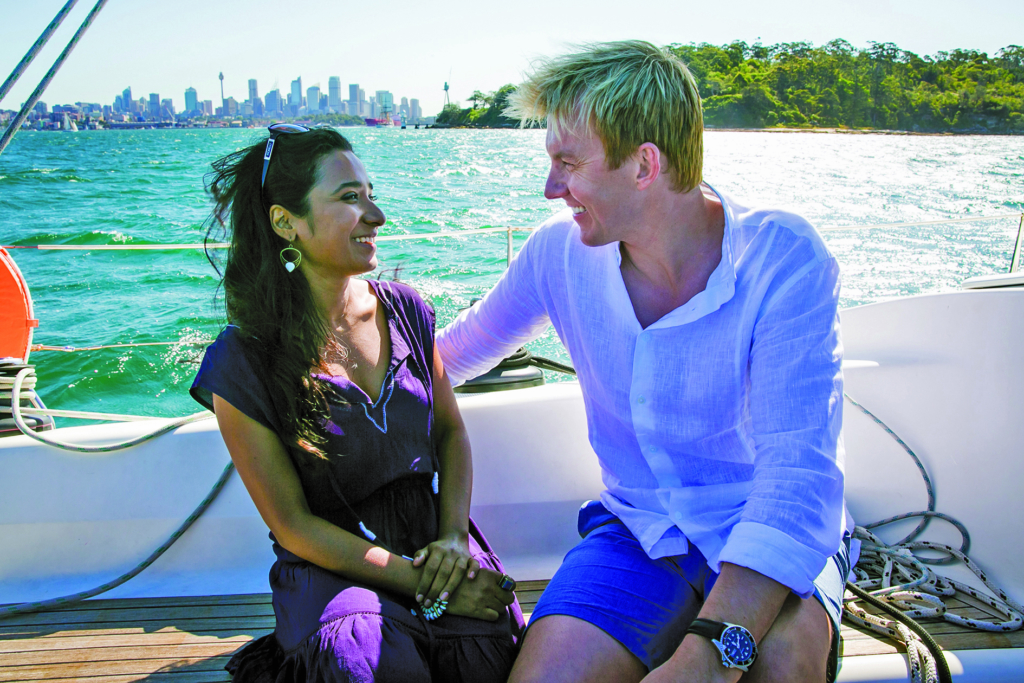
But UnIndian detracts from its own strengths by falling into the trend of rendering minority cultures in an over-the-top, exaggerated style. As the story itself isn’t robust enough, the filmmakers have relied on the same tropes that characterise many other ‘ethnic comedies’ in Australian cinema. UnIndian tediously regurgitates clichés relating to Indian culture through a Western lens – the overbearing Indian mother, the arrogant doctor suitor, the Indian friend who acts as ‘cultural translator’ for the white characters. It also suffers from clichés connected to the rom-com genre – single mum juggling career and parenting, lovemaking after being caught in the rain, an airport scene.
UnIndian feels as though it was made with both Indian and Australian audiences in mind, particularly as it tries to fuse Bollywood style with more conventional Western filmmaking approaches – as when it adopts Holi-like theatrics in a way that breaks with the film’s realism, creating the bizarre effect of a daydream. But, in attempting to address both, UnIndian ends up speaking effectively to neither. In one scene, Meera notes that her migrant community is not Australian enough for Australia but not Indian enough for India; this observation applies not only to the experiences of most other migrants, but also to Sharma’s film as a whole.
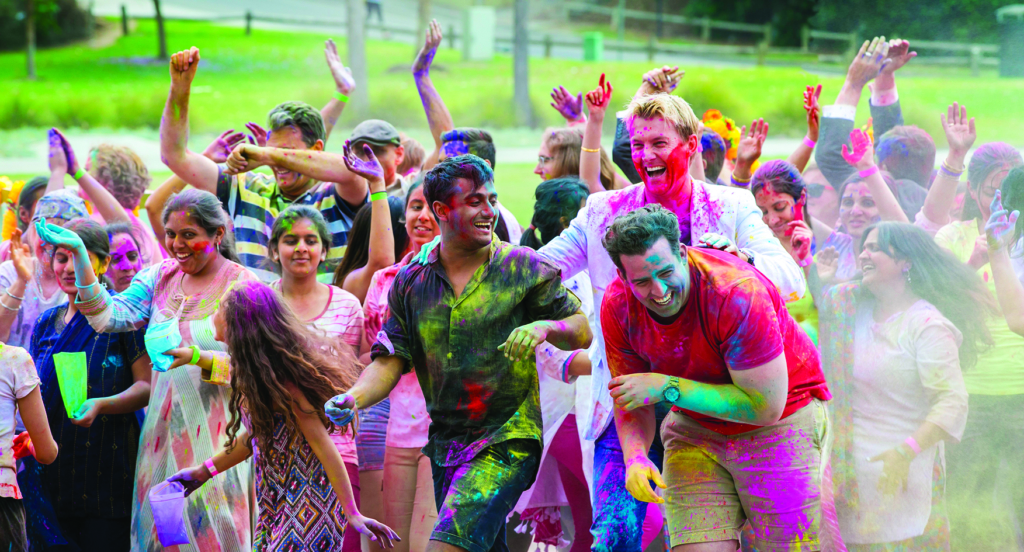
Reality over romanticism
Unlike many of its predecessors, Ali’s Wedding takes an extraordinary true story and tells it simply yet majestically. Importantly, it doesn’t rely on clichés to push the narrative forward. While the film does invoke some stereotypes, it does so with love and laughter – and it’s always clear when the film is owning these stereotypes or subverting them. The filmmakers accomplished this feat by working with relevant communities when bringing the film to life, which involved seeking out
a wide range of locally based religious and cultural groups in Australia [and] casting a number of specific roles from either experienced or first time actors of Iraqi, Iranian or Lebanese cultural descent.[3]Allison Meadows, quoted in Matchbox Pictures, op. cit., p. 12.
As part of their research, the filmmakers also ‘contacted universities, colleges and youth organisations that provide support services and friendship to students of culturally relevant backgrounds’.[4]ibid. Despite this, some community leaders and students were apprehensive about participating in the project–signalling that, in contemporary Australia, people from minority backgrounds are aware of how simplistic or stereotypical portrayals continue to damage how they are perceived among wider society. But, thanks to their extensive efforts and goodwill, the team behind Ali’s Wedding were able to gain the trust, support and endorsement of these communities.[5]ibid.
Another remarkable aspect of Ali’s Wedding is its fusion of the great Australian comedy and classic Hollywood rom-com with the aesthetics of the Middle Eastern fantastical romantic comedy. These almost magic-realist moments are quite common in Middle Eastern films, which tend to employ whimsical elements and melodrama to create more joyous (sometimes said to be escapist) portrayals – Nadine Labaki’s Caramel (2007) and Where Do We Go Now? (2011), Solitaire (Sophie Boutros, 2016), Halal Love (and Sex) (Assad Fouladkar, 2015) and May in the Summer (Cherien Dabis, 2013) come to mind. But this is the first time an Australian film has crossed over so confidently into the same stylistic territory. At times, Ali’s Wedding even has a similarly folkloric feel in the way that the audience knows a story is being told, harking back to the poetic fables of Lebanese-American writer Khalil Gibran. With its use of voiceover narration, the film subtly honours the Middle Eastern tradition of oral storytelling – a powerful act, since members of our communities so rarely get to tell our stories on our terms in a wider Western context.
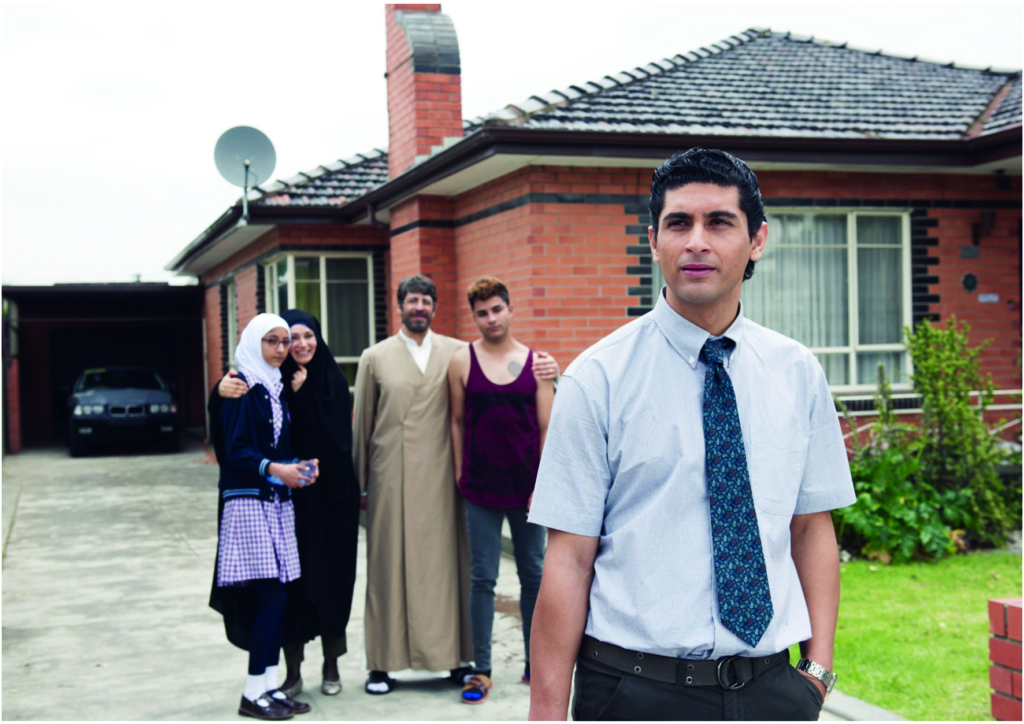
Our society’s focus on tokenistic diversity explains why local cinema has long struggled to capture life in modern Australia. We fail to reflect reality because, ultimately, Australia is itself still in denial of its reality as a multicultural nation. When diverse people are represented on film, it’s often through a white Anglo-Australian filter, as when a character has ‘assimilated’ enough to be deemed palatable for local audiences. Rarely are culturally and linguistically diverse communities depicted in all our complicated glory.
Each of the three films I’ve touched on in some way breaks out of the mould by depicting the difficulties faced by immigrants living in Australia. But, whereas UnIndian frames the process of fitting in as central to its story, Alex & Eve and Ali’s Wedding are more focused on the daily lives of the communities they cast the lens on. The extent to which each film dives into its story differs significantly – and, in turn, what makes each story significant is distinct. Yet all three remind us that communities themselves must drive movements for visibility; as Ali’s Wedding’s trajectory, in particular, has shown, artistic self-representation is key to cinematic empowerment. Its strength lies not just in how it channels themes common among Middle Eastern and migrant stories, but also in how it does so in an unmistakably Australian context. It feels wholly like an Australian film – and, for that, it is a true revelation.
http://aliswedding.com.au/
http://alexandevemovie.com/
http://unindianfilm.com/
Endnotes
| 1 | Andrew Knight, quoted in Matchbox Pictures, Ali’s Wedding press kit, 2016, p. 6. |
|---|---|
| 2 | Matilda Dixon-Smith, ‘Australia Finally Has Its First Muslim Romantic Comedy’, Junkee, 2 November 2016, <http://junkee.com/australian-writer-osamah-sami-bringing-us-first-muslim-rom-com-alis-wedding/88668>, accessed 15 August 2017. |
| 3 | Allison Meadows, quoted in Matchbox Pictures, op. cit., p. 12. |
| 4 | ibid. |
| 5 | ibid. |
